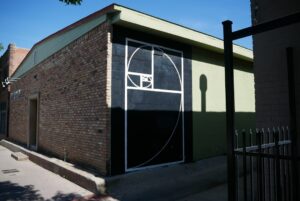Introduction
The Renaissance was a period of great intellectual and scientific advancement, and it witnessed significant developments in the fields of mathematics and geometry. During this time, scholars made groundbreaking discoveries in algebra, trigonometry, and arithmetic, laying the foundation for future advancements in mathematics. Additionally, the seventeenth century saw the birth of analytic geometry, a revolutionary branch of mathematics that introduced the concept of coordinates and paved the way for modern calculus. We will explore the contributions of notable mathematicians such as Descartes and Fermat to these fields during the Renaissance and seventeenth century.
Algebra in the Renaissance
Algebra, which deals with equations and unknown quantities, saw remarkable progress during the Renaissance. Mathematicians like François Viète and John Wallis made significant contributions to the development of algebraic notation and the solving of complex equations. Viète, often referred to as the “father of modern algebra,” introduced the use of letters to represent unknowns, a practice that is still widely used today. His work laid the groundwork for the symbolic manipulation of equations, a fundamental aspect of algebra.
Trigonometry in the Renaissance
Trigonometry, the study of relationships between angles and sides of triangles, also flourished during the Renaissance. The works of mathematicians such as Regiomontanus and François Viète played a crucial role in advancing trigonometric concepts. Regiomontanus, a German mathematician, made significant contributions to the development of trigonometry by introducing the concept of trigonometric tables. These tables provided a systematic way of calculating trigonometric functions and were widely used by navigators, astronomers, and surveyors.
Arithmetic in the Renaissance
Arithmetic, the study of numbers and basic operations, underwent significant advancements during the Renaissance. Mathematicians like Leonardo of Pisa, also known as Fibonacci, made substantial contributions to the understanding of arithmetic. Fibonacci introduced the Hindu-Arabic numeral system to Europe, replacing the cumbersome Roman numerals. This numeral system, which we still use today, revolutionized arithmetic by introducing the concept of place value and decimal notation. The widespread adoption of this system greatly simplified mathematical calculations and paved the way for further advancements in the field.
Analytic Geometry in the Seventeenth Century
In the seventeenth century, they witnessed a groundbreaking development in mathematics with the birth of analytical geometry. René Descartes, a French philosopher and mathematician, and Pierre de Fermat, a French lawyer and mathematician, independently laid the foundation for this new branch of mathematics. Descartes introduced the concept of coordinates, where ordered pairs of numbers represent points on a plane. This breakthrough allowed geometric problems to be solved algebraically, leading to the development of calculus and modern mathematical analysis.
Fermat, on the other hand, made significant contributions to the study of curves and equations. His work on the theory of equations and the method of finding tangent lines to curves laid the groundwork for calculus and differential geometry. Fermat’s principle of least time, which states that light follows the path that minimizes the time taken, also had a profound impact on the field of optics.
Conclusion
During the Renaissance and seventeenth centuries, we witnessed remarkable advancements in the fields of algebra, trigonometry, arithmetic, and analytic geometry. These developments laid the foundation for modern mathematics and paved the way for further advances in calculus, number theory, and other branches of mathematics. The contributions of mathematicians such as Descartes, Fermat, Viète, and Fibonacci continue to shape the way we understand and apply mathematics today.


















+ There are no comments
Add yours